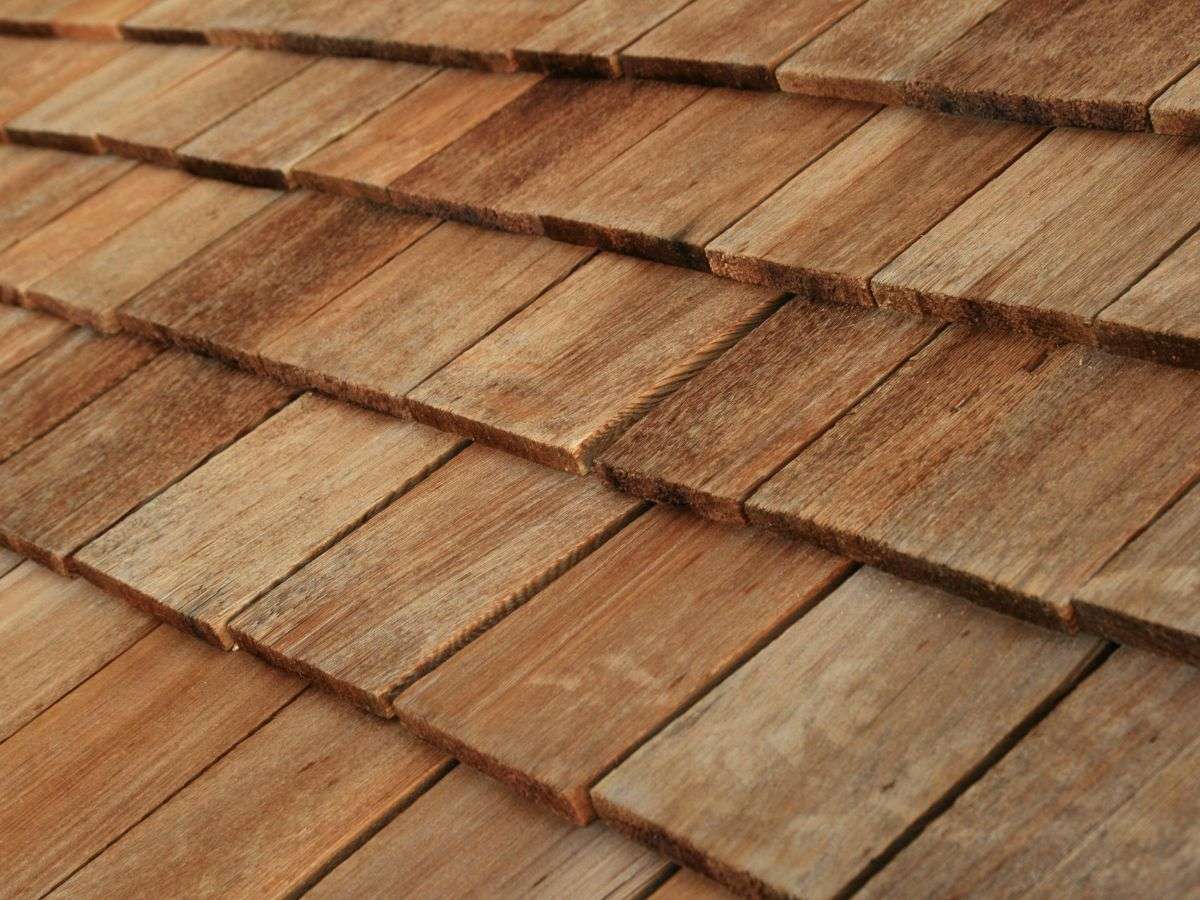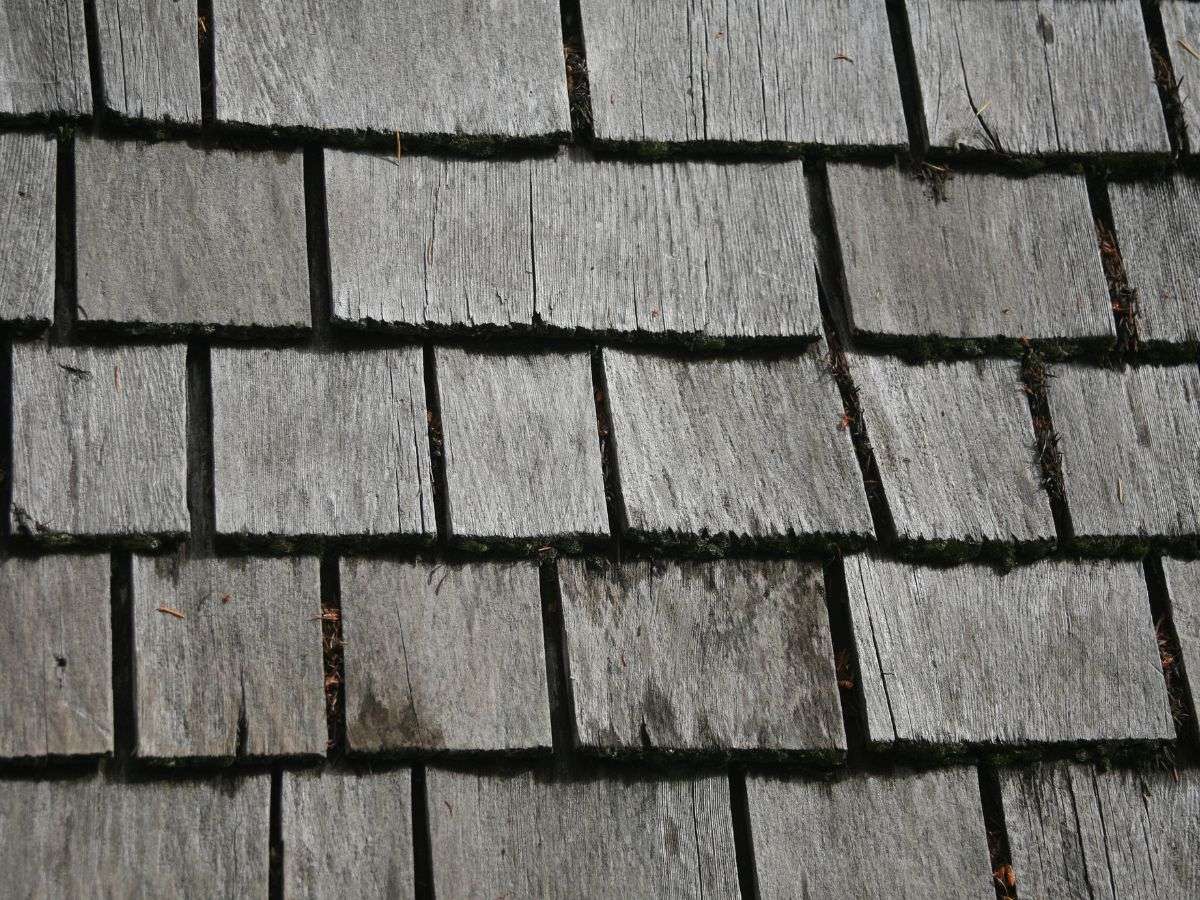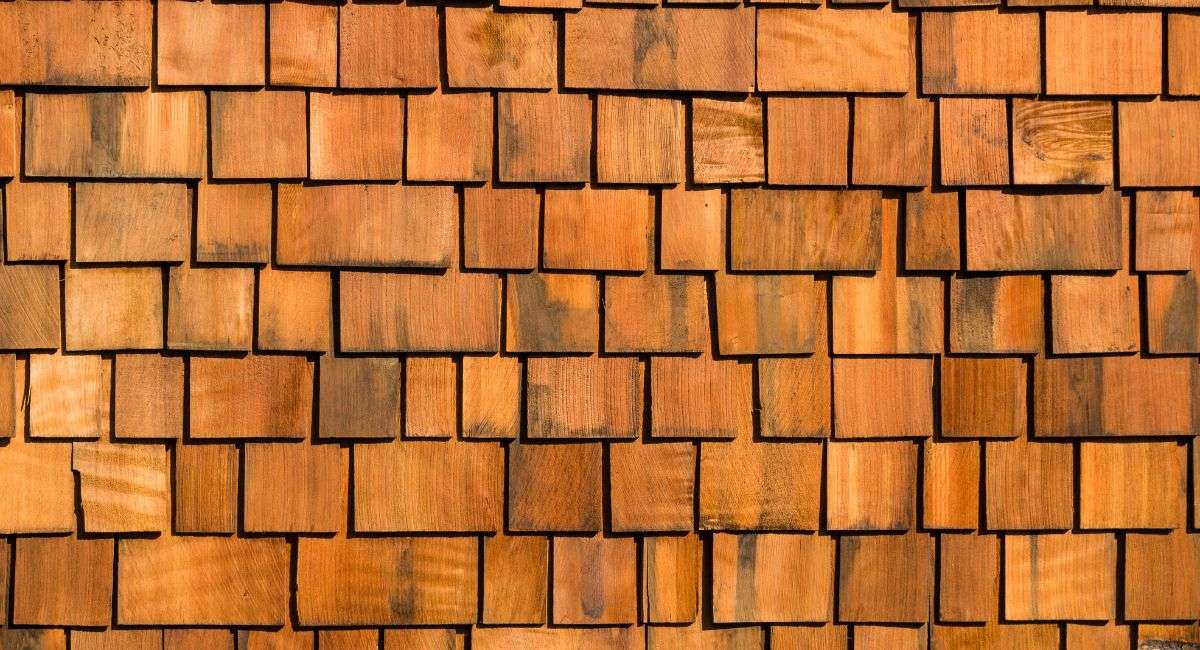The Ultimate Guide to Wood Shake Roofs
Wood shake roofs are loved for their natural beauty and timeless charm, adding rustic elegance to homes. However, their appeal comes with important considerations, including material, environmental impact, and maintenance. This guide covers everything you need to know about wood shake roofs, from lifespan and fire safety to upkeep and replacement, helping you decide if they’re right for your home.
What is a Wood Shake Roof?
A wood shake roof is made from individual wooden pieces, or shakes, crafted from durable woods like Western Red Cedar, redwood, or pine. Known for their textured, uneven surfaces and thick “butt” ends, shakes create a rustic, dimensional look that blends beautifully with natural surroundings, making them a favorite for residential homes.

Grades and Quality: What to Consider
The lifespan and performance of a wood shake roof depend on the wood’s grain and grade.
Grain Types:
- Edge-grain: Tight, straight grain that resists warping and splitting. Premium shakes are typically edge-grain.
- Flat-grain: Exposes more sapwood, making it less stable and more prone to cracking.
- Slash-grain: Contains significant sapwood, making it less durable and weather-resistant.
Grades:
Shakes are graded into categories like “Common Grade,” “Select Grade,” and “100% Straight Grain Grade.” Higher-grade shakes last longer but cost more. Always ask about the grade and request documentation when possible.
Choosing the right type and quality of shakes is essential for durability, maintenance, and performance. A well-informed choice ensures your roof withstands the elements and lasts for years.
How Long Will It Last? The Lifespan of a Wood Shake Roof

Cedar shake roofs typically last 20 to 30 years. With quality materials and proper maintenance, they can last up to 30 years—or even 50 years in ideal climates. Some more conservative estimates place their lifespan between 15 and 30 years, similar to medium-grade asphalt shingles. The wide range reflects the many factors that influence longevity.
Key Factors That Impact Lifespan
The lifespan of a wood shake roof depends on factors like climate, material quality, installation, and many more:
- Moisture & Humidity: Frequent rain, humidity, or extreme weather can cause wood shakes to warp, decay, or grow moss and fungi, shortening their lifespan. Shakes last longer in dry climates.
- Sun Exposure: UV rays weaken wood fibers, making shakes brittle. Roofs in full sun may last 15-25 years, while shaded roofs can last 25-35 years.
- Wind and Storms: Wood shakes resist wind, but severe storms can dislodge or damage them, leading to leaks.
- Grade of Shakes: Premium cedar shakes, like edge-grain Western Red Cedar, last longer due to better rot and insect resistance.
- Installation Quality: Poor installation can ruin even the best materials. Proper techniques prevent leaks, poor ventilation, and rot. Hiring a skilled contractor is crucial.
- Maintenance Impact: Regular care, like clearing debris, treating moss, and replacing damaged shakes, extends a roof’s life. Well-maintained roofs may last over 30 years, while neglected ones may fail in 15-20 years. Maintenance every 2 to 6 years is key.
- Debris Removal: Leaves and debris trap moisture, increasing risks of mold, rot, and pests. Regular cleaning is vital.
- Pitch: Steeper roofs (45 degrees or more) shed water and dry faster, lasting 30-40 years. Moderate-pitched roofs may last 20-30 years, while low-pitched ones (under 20 degrees) are more prone to moisture issues and may last only 15-20 years.
- Ventilation: Proper attic airflow controls moisture and temperature, preventing condensation and rot.
Pros and Cons of Wood Shake Roofing

The Benefits of Wood Shakes
- Wood shakes are valued for their natural beauty and charm. Their textured look, with unique grain patterns and shadows, adds depth and complements many architectural styles such as wood siding, brick, and stone. They bring a timeless appeal often seen on traditional or high-end homes.
- Wood is a natural insulator, helping keep homes cooler in summer and warmer in winter, which can reduce energy costs. With a higher thermal resistance (R-value) than asphalt shingles, wood shakes are energy-efficient.
- Wood shakes are durable and weather-resistant, withstanding wind speeds up to 245 mph and earning Class 4 impact ratings for hail. They often outperform asphalt shingles in hail resistance.
- Made from renewable, biodegradable materials, wood shakes are eco-friendly when sustainably sourced and have a smaller environmental footprint than petroleum-based asphalt shingles.
The Downsides: Challenges to Consider
- Wood shakes are expensive, often costing more than asphalt shingles in both materials and labor. Cedar shakes can be nearly double the cost of asphalt, averaging around $725 per roofing square (100 square feet) for materials, with installation ranging from $5.50 to $13.50 per square foot due to the intricate fitting process.
- They require regular upkeep, such as clearing debris, treating for moss and algae, and applying preservatives to prevent moisture and UV damage. Repairs for cracked or loose shakes must be done quickly, making maintenance far more intensive than asphalt shingles.
- Wood is prone to issues like warping, cracking, rotting, and decay due to moisture. Poor ventilation and debris buildup worsen the problem, while moss and algae thrive on damp wood, speeding up deterioration.
- Wood shakes can attract pests like termites and carpenter ants, which may cause structural damage. Secondary pests like spiders and silverfish can also follow.
- Over time, wood shakes weather naturally, fading to silvery gray or dark brown. While some homeowners like this aged look, others may not. As a combustible material, wood shakes are more fire-prone than asphalt, metal, or tile, which can raise safety concerns and affect building codes or insurance.
- Choosing a wood shake roof means weighing its beauty and benefits against the high costs and upkeep. While durable and eco-friendly, it requires consistent maintenance. For those willing to invest time and resources, the result is a roof with natural charm and lasting resilience.
The Fire Risk: Safety Concerns with Wood Shake Roofs
Wood shake roofs carry serious fire risks, especially in wildfire-prone areas or densely populated neighborhoods where fires spread quickly. Understanding these risks and how to reduce them is essential.
Why Wood is a Fire Hazard
Wood is highly flammable, making it a risky roofing material. Untreated wood shakes ignite easily, especially in dry weather or from embers during wildfires. Western Red Cedar, a common choice for durability, ignites at just 378°F (192°C). Wind-carried embers can spark fires on wood roofs from a distance.
Fire Resistance Ratings
Roofing materials are rated for fire resistance:
- Class A: Highest protection, withstands severe fire exposure.
- Class B: Moderate fire resistance.
- Class C: Minimal fire resistance.
Untreated wood shakes are generally unrated and offer little protection.
How to Achieve a Class A Rating
Wood shakes can meet Class A standards through:
- Pressure Treatment: Fire-retardant chemicals applied during manufacturing.
- Component Systems: Using fire-resistant underlayment, like heavy asphalt cap sheets, with treated shakes. Proper installation is critical to maintain ratings and warranties.
Building Codes in Fire-Prone Areas
In wildfire zones like California or Wildland Urban Interface (WUI) areas, building codes often ban untreated wood shakes or require Class A fire-rated roofs. For instance, California mandates Class A roofs in high-risk zones. Always check local codes before installing wood shake roofs.
Insurance Challenges with Wood Roofs
The fire risks of wood shake roofs can increase insurance costs. Insurers may charge higher premiums, deny coverage in risky areas, or require proof of a Class A rating, making these roofs more expensive to insure.
Preserving Your Investment: Wood Shake Roof Maintenance and Repair
A wood shake roof adds natural charm but needs regular maintenance to last and protect your home. Routine care can help prevent costly repairs.
Regular Inspections: Your First Line of Defense
Inspect your roof twice a year, in spring and fall, or after severe weather. Check for:
- Cracked, split, warped, curled, or cupped shakes.
- Missing or loose shakes.
- Moss, mildew, algae, or rot.
- Debris like leaves, pine needles, or branches.
- Damaged flashing around chimneys, vents, skylights, or valleys.
Identifying issues early allows for quick fixes, avoiding major damage.
Cleaning: Remove Debris and Wash Gently
Keeping your roof clean is essential.
- Debris Removal: Clear leaves, needles, and branches with a soft brush, broom, or low-power leaf blower. Debris traps moisture, leading to rot and mold.
- Washing: Use a low-pressure garden hose or soft wash system to clean dirt, algae, or moss. Avoid high-pressure washers, as they can damage the wood or force water under shakes. Use a wood-safe cleaning solution if needed and rinse thoroughly. Clean in spring, fall, or as needed based on climate and tree coverage.
Protective Treatments: Preservatives and Inhibitors
Treatments can help protect wood and prevent growth of moss or algae.
- Apply a wood preservative every 2–3 years (or up to 6 years, depending on conditions). These guard against moisture, UV rays, and pests.
- Use oil-based preservatives for deeper protection or water-based ones for easier application. Apply during dry, mild weather.
Gutter Maintenance for Proper Drainage
Good drainage is vital for protecting your roof.
- Clean gutters regularly, especially in fall or after storms, to prevent water backup.
- Keep downspouts clear and direct water away from your foundation.
Identifying and Fixing Common Problems
Even with proper care, wood shake roofs can develop issues.
- Leaks: Look for water stains on ceilings or dampness in the attic. Causes include cracked or missing shakes, damaged flashing, or poorly sealed valleys.
- Curling or Splitting Shakes: Weathering can cause curling or splitting. Excessive curling exposes the underlayment and may require replacement.
- Moss, Algae, and Rot: Moss and algae thrive in shady, humid areas, trapping moisture and causing rot. Signs of rot include softened wood, frayed edges, or fuzziness.
- Pests: Termites, carpenter ants, and beetles can damage wood shakes. Look for small holes, sawdust-like frass, or visible insect activity.
DIY vs. Hiring a Professional: When to Call in the Experts
Replacing a few damaged shakes can be a manageable DIY project for homeowners comfortable and safe working on a roof, especially if the roof pitch isn’t too steep. However, some situations call for a professional roofer:
- Extent of Damage: If damage is widespread or affects large sections of the roof.
- Leak Detection: If it’s hard to pinpoint the source of a leak.
- Safety Concerns: Working at height can be risky. If the roof is high, steep, or you lack proper safety gear and experience.
- Complex Repairs: Issues with flashing, roof valleys, or structural damage should be handled by professionals. Hiring a pro ensures repairs are done correctly, with proper techniques and materials, often backed by a workmanship warranty for peace of mind.
When It’s Time for a New Roof: Wood Shake Replacement
Every roof has a lifespan, even with the best care. For wood shake roofs, knowing when repairs are no longer enough and a full replacement is needed is key to protecting your home.
Signs Your Wood Shake Roof Needs Replacement
Here are the main signs it’s time to replace your wood shake roof:
- Age and Deterioration: If your roof is nearing or past its lifespan (20-50 years), it’s time for an assessment. Brittle, decayed, or textureless shakes indicate the need for replacement.
- Frequent Leaks: One leak might be repairable, but recurring leaks or water stains mean the roof is failing.
- Extensive Shake Damage: Severe curling, cracking, splitting, or missing shakes—especially if underlayment is exposed—compromise the roof’s integrity.
- Moss, Rot, or Algae: Persistent growth that cleaning can’t fix shows shakes are retaining moisture. Look for frayed edges or spongy textures.
- Sagging or Structural Issues: Sagging suggests serious structural damage, often from prolonged moisture or rot, and usually calls for full replacement.
Conclusion: Is a Wood Shake Roof Right for Your Home?
Wood shake roofs offer rustic charm, great insulation, and eco-friendly options, but they come with higher costs, regular maintenance, and risks like moisture, pests, and fire. Before choosing a wood shake roof, consider your budget, local climate, fire safety regulations, and willingness to commit to ongoing care.
While the natural beauty appeals to some, others may prefer safer, low-maintenance alternatives. Consulting an experienced roofer can help you make the best choice for your home. If you’re in Tennessee, then contact Roof MD! We can help inspect, repair or replace your wood shake roofing system. Plus we offer free roofing inspections to get started.
